Digital Plan progress report
In 2023, we published the Digital Plan to transform government services into more inclusive, accessible and connected solutions for people in B.C. As we celebrate its first anniversary, we recognize the significant progress made across government.
Teams have embraced human-centred design and advanced technological modernization. This report highlights our efforts in improving digital services, delivering innovative solutions and enhancing digital experiences for the people of B.C. As we find ourselves in the next year of this ambitious plan, we continue to meet the evolving needs of people in B.C. by delivering new and reimagined services and advancing our commitment to excellence in public service.
Want the print version?
Last updated on
We are creating more connected experiences for people accessing our services
Significant progress has been made in creating integrated experiences that align with the calls to action in the “Connected services” mission of the Digital Plan. Teams across government are collaborating to provide people with the information and services they need all in one place, whether it’s assessing energy usage, guiding post-high school decisions or planning commutes.
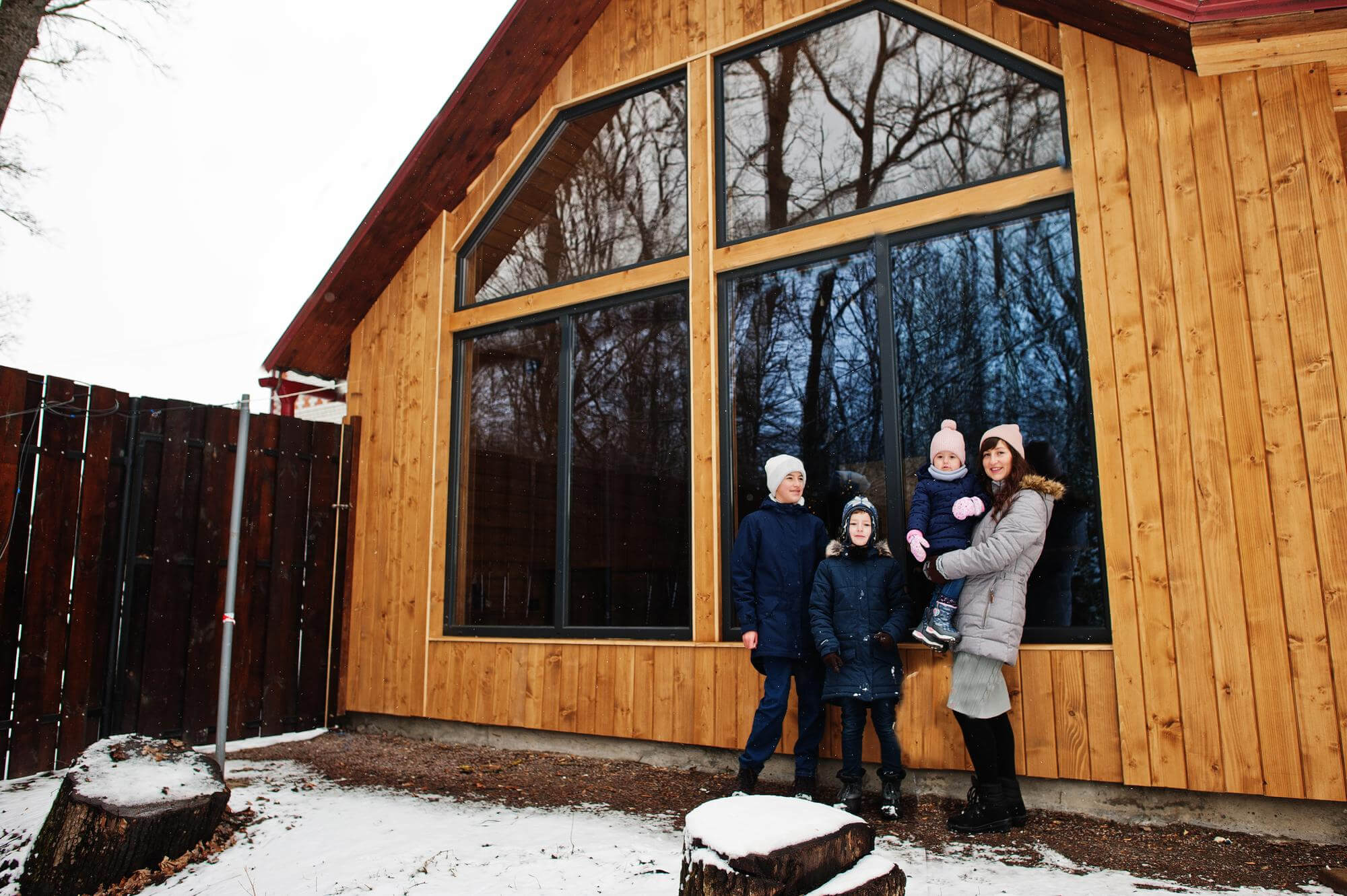

Collaborating across government to identify service gaps and opportunities
Empowering homeowners with the BC Home Energy Planner tool
Understanding how a home uses energy is important information for homeowners, helping them manage energy bills and reduce their impact on the environment.
To get this information, many people rely on home energy assessments, which can be expensive, time-consuming or hard to access in remote communities. To address that challenge, the Ministry of Energy, Mines and Low Carbon Innovation created the BC Home Energy Planner tool.
This user-friendly solution empowers homeowners to assess their energy usage independently. Integrated with the BC Data Catalogue, the Planner provides a Home Energy Score and retrofit recommendations for a home’s heating, cooling, insulation and windows. This helps homeowners reduce energy usage, adapt to a changing climate and apply for rebates.
The Planner is currently in a pilot phase and is being tested in communities throughout B.C. during the summer of 2024.

Delivering priority connected services
Making future planning clearer with Find Your Path
This past year, the Ministry of Post-Secondary Education and Future Skills introduced “Find Your Path,” a digital tool for students and career seekers who aren’t sure what their education and career options may be. Find Your Path is designed to help people explore careers and relevant education programs in B.C.’s public post-secondary system, and apply directly to the program of their choice.
Ongoing collaboration between WorkBC.ca, StudentAidBC and EducationPlannerBC will identify future opportunities to enhance Find Your Path, promote better integration between sites and promote a “no wrong door” approach to people exploring their potential education and career pathways.
During development, the team collaborated with students, educators and industry experts to make sure the tool met user needs.
“Find Your Path” is a connected service that sets a new standard for user-friendly government services.
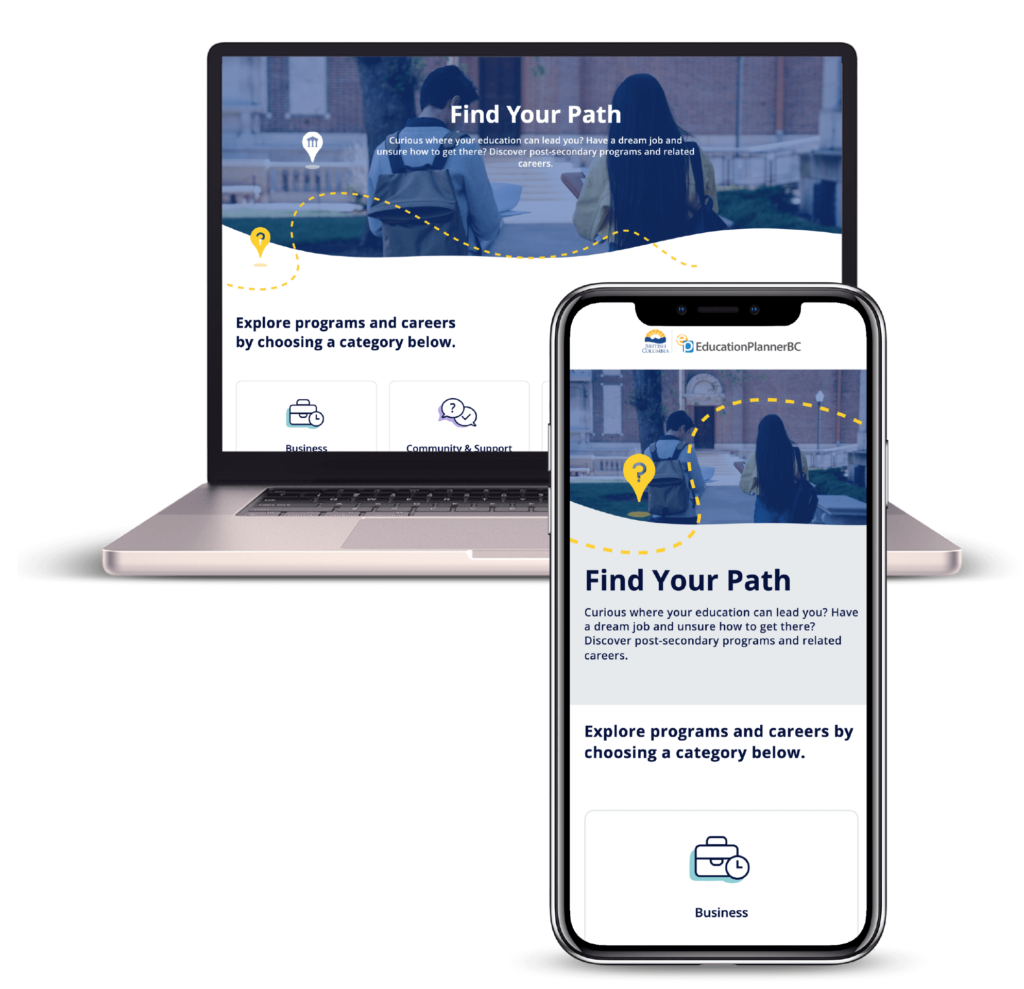
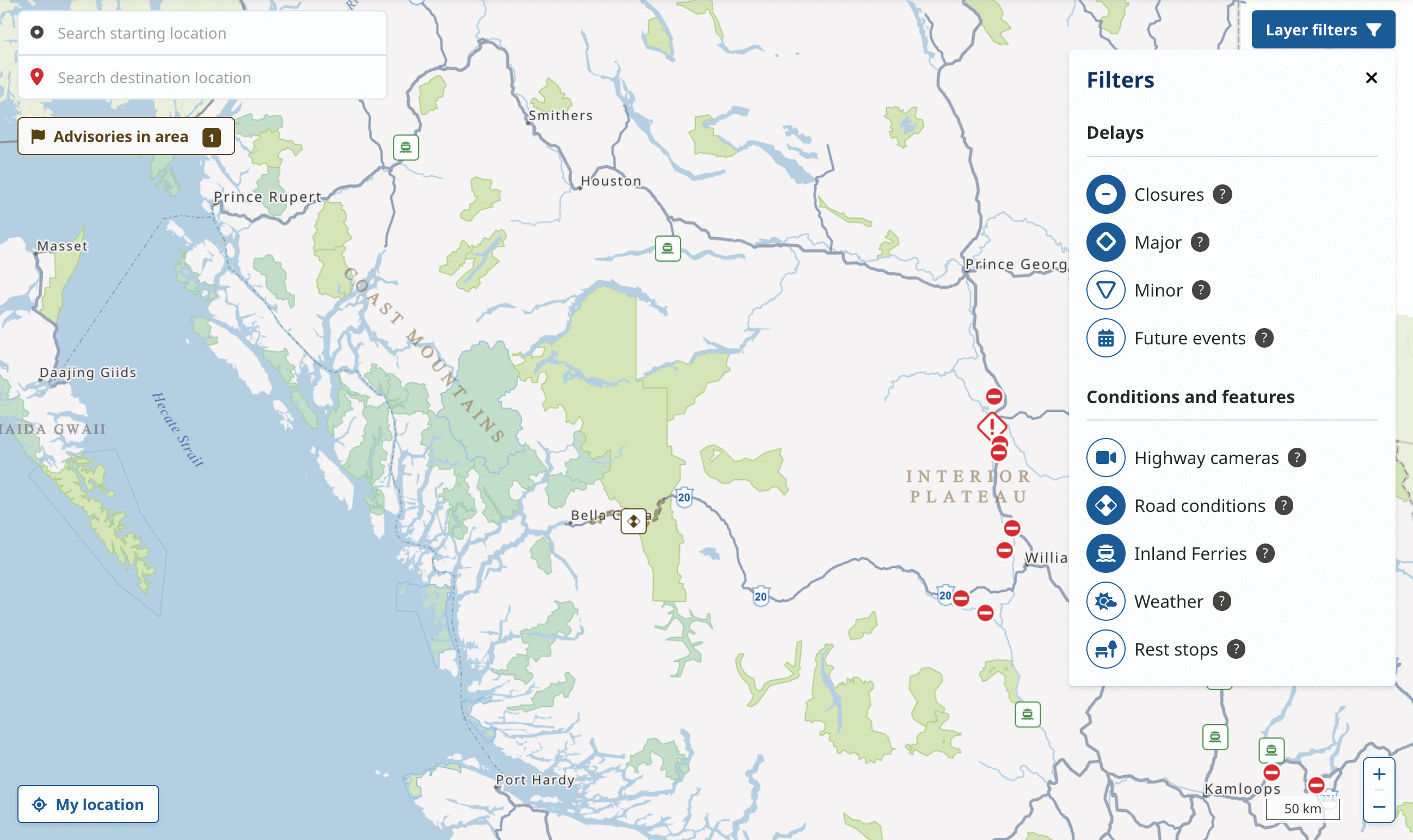

Applying service design principles to all service modernization projects
Modernizing DriveBC for better travel and safety
DriveBC is the go-to resource for travel information in B.C., but the platform has been challenged to keep up with growing public expectations around the usability of the site and increased use during emergencies.
The Ministry of Transportation and Infrastructure is actively addressing these issues with a project to make the platform more resilient and user-friendly. By adopting Agile methodologies and conducting extensive user testing, in May 2024 the project team released a DriveBC beta version for public feedback that better meets user needs. This development was informed by insights from 425 survey respondents, 16 in-depth interviews and feedback from 180 industry partners.
Following the public beta launch, the DriveBC team will continue to collect and incorporate feedback from users and partners to improve the platform. Future efforts will focus on providing a more personalized experience, including relevant travel information from transportation and emergency services and allowing users to save their preferences. This will support users in making travel decisions and enhance the back-end experience for ministry staff updating the digital platform.
This work will help B.C. travellers to better access trip planning information that matters to them and make more informed safety decisions.
How the Ministry of Citizens’ Services is supporting connected services

Partner with ministries to identify and prioritize service gaps through research with people and businesses
Working with the Ministry of Municipal Affairs, CITZ conducted research to identify service gaps in the Multi-Language Resources for Newcomers platform. Their findings showed a demand for visual content, consistent web translations and language continuity. The platform now supports newcomers with resources tailored to their needs.
Progress
Ongoing

Redevelop gov.bc.ca to improve user access to information and services, focusing on user needs rather than bureaucracy
Version 2.0 of the gov.bc.ca Alpha redesign was launched, incorporating feedback from over 80 interviews with diverse members of the public and more than 4,700 survey responses.
Progress
Ongoing

Develop web content standards, tools and training to ensure public service employees can create web content that is accessible, inclusive, consistent and multilingual
Simplified accessibility guidelines are now available on digital.gov.bc.ca, supporting everyone in government to build modern, people-centred services.
Progress
Ongoing
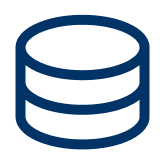
Pilot data registers to use trusted datasets that enhance data quality and reduce duplication across government systems
The Ministry of Environment and Climate Change Strategy partnered with CITZ to successfully pilot the province’s first Data Register, a single source of truth for park names. This sets a precedent for data management and reuse across government services. As part of their approach to reconciliation, the ministry often works with First Nations groups to rename parks within a Nation’s territory to Indigenous languages.
Progress
Ongoing

Launch new digital tools at Service BC offices to enhance streamlined and connected service experiences for the public
Support resources used by employees at Service BC Centres have transitioned to a new knowledge management tool, ensuring consistent and efficient interactions with the people of B.C. In addition, a new call centre platform is being implemented within Service BC.
Progress
Ongoing

Prioritize funding for connected services to ensure ministries have the resources to develop and maintain services that meet public needs
Funding was allocated to the Ministry of Housing for an online building permit submission portal serving multiple jurisdictions. This portal automates completeness checks, assesses building code compliance and speeds up permit reviews.
Progress
Ongoing
We are taking steps to increase the trust people have in government’s digital services
Digital trust goes beyond protecting data; it’s about building confidence in every interaction with government services. When people can quickly find the information they need, they feel more confident using online services. That’s why the gov.bc.ca platform has been overhauled to simplify finding information.
We’re also adopting digital credentials solutions like the BC Wallet, allowing individuals to securely handle permits, IDs and licences online. When people know their information is secure, it builds trust and confidence in our digital services. With strong multi-factor authentication, we ensure quick, convenient access for government employees while preventing unauthorized access. Advanced threat detection tools protect over 86,000 government identities, demonstrating our commitment to safeguarding personal information and making interactions with government easier.
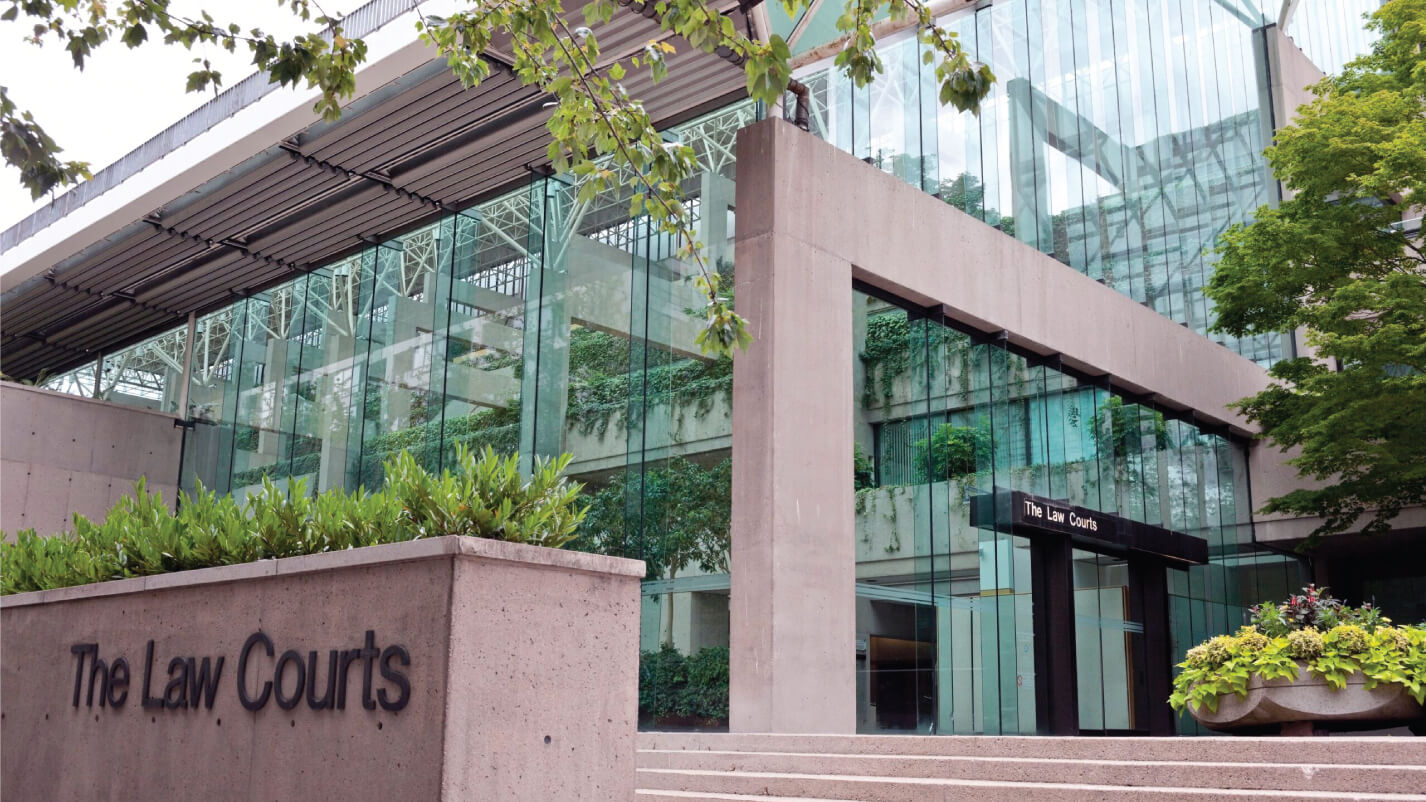

Embed privacy and security by design into services
Increasing efficiency in the justice system
The BC Prosecution Service is improving how the justice system works with its Digital Evidence and Disclosure Management System (DEMS).
The system includes tools that are easy to use, allowing users to access and manage different types of evidence, such as text documents, video and audio files and photos. It makes sure digital evidence stays safe and secure, meeting our promise to provide trustworthy digital services.
By integrating with an existing case management system, DEMS speeds up legal processes through automating tasks and providing essential information to those who need it.

Designing websites and digital services to be inclusive, accessible, modern and consistent with other government websites and services
EPIC.engage supports community feedback
It’s important for people in B.C. to be able to provide input on proposed major projects in their communities, ensuring their concerns are addressed and impacts are managed. The Environmental Assessment Office (EAO) oversees this process by evaluating environmental, economic, social, cultural and health impacts to ensure inclusive decision-making.
Over time, it became clear that people were struggling with the EAO’s online platform. Users were overwhelmed by the complexity of the documents, making it hard to find important information. People had trouble navigating the site and couldn’t find clear instructions on how to give useful feedback or understand the assessment process.
To address these issues, the EAO led extensive user testing, including over 150 internal staff interviews, 6 prototype focus groups, dozens of user testing sessions and feedback from hundreds of public respondents. These insights informed the development of EPIC.engage, a user-friendly platform designed to simplify technical documents, improve navigation, offer clear guidance and ensure privacy through anonymous commenting. Users can also edit feedback if it was rejected because it contained personal information. The platform includes features like mobile access, interactive maps, a public-facing results dashboard and tailored notifications to enhance user experience and engagement.
EPIC.engage helps ensure that community values are better reflected in project assessments by supporting more informed and inclusive public participation. This fosters trust in government processes.
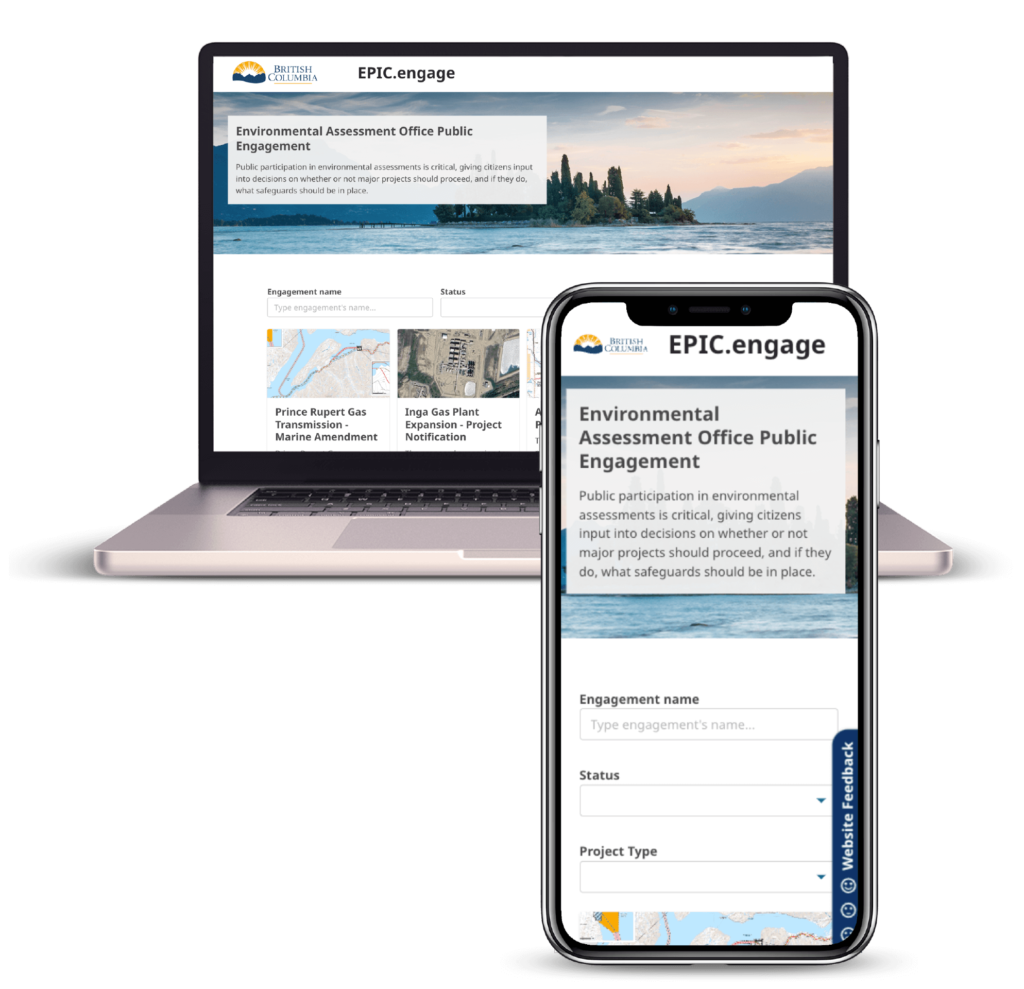


Adopting government identity and trust services
Digital credentials support transparency in the mining industry
In B.C. and globally, mining companies are under increasing pressure to demonstrate their environmental, social and governance (ESG) performance. ESG standards measure the impact on the environment, responsibility to society and the quality of management. The Province’s policy commitments align with ESG priorities, including the goal to lower emissions by 40% by 2030, leading to a cleaner, more sustainable future.
Increasingly, investors and customers request mines to share their sustainability performance data, such as details about their environmental impact, resource use, waste management, emissions, site restoration, health and safety practices and community involvement. In the past, sharing this data through paper, fax and email was inefficient and unreliable, making it hard for mines to consistently prove they met ESG standards.
To address these outdated systems, the Ministry of Energy, Mines and Low Carbon Innovation tested digital credentials to verify a mine’s permit status and ESG commitments. These credentials offer a secure, efficient and trustworthy way to share mining data by digitizing permits and sustainability reports. This allows mines to quickly share information, demonstrating their responsible practices while enhancing global competitiveness in markets that prioritize sustainably-sourced goods.
Collaborating with mining companies, regulators and technology providers, the ministry developed secure digital credentials to revolutionize the mining industry’s reporting processes. This is a positive step towards meeting CleanBC‘s goals of transparency, emission reduction and sustainability while meeting the demand for critical minerals essential for phones, medical devices and electric cars.
Strengthening the security of our IT systems
New measures add an extra layer of security to the login process, and advanced monitoring of suspicious activity improves our defences and better safeguards our data. We’re upgrading communication systems, replacing outdated systems and implementing new digital credential solutions to make our services more modern and resilient. And we’re sharing cybersecurity learning sessions and best practices with the broader public sector, helping to make online interactions safer for everyone using government services.

How the Ministry of Citizens’ Services is supporting digital trust
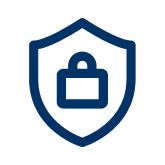
Bolster cybersecurity by implementing new security controls and tools to help government better prevent, detect and respond to cybersecurity threats
New tools and services, including advanced identity threat detection and multi-factor authentication, were deployed to protect over 86,000 government identities and help ensure the security and availability of B.C. government services. The adoption of personal credentials increased from 132 to 1,490, protecting sensitive information and providing secure access to government services.
Progress
Ongoing

Train public service employees and people in B.C. on cybersecurity awareness
Throughout the year, CITZ led a cybersecurity awareness campaign including anti-phishing efforts, security news updates and YouTube sessions, reaching thousands of BC Public Service employees. For Cyber Security Month in October, additional specialized training and awareness activities were offered to further enhance cyber resilience.
Progress
Ongoing
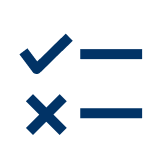
Modernize the Privacy Impact Assessment process to strengthen the privacy protective culture across government
Efforts are currently underway to streamline and strengthen Privacy Impact Assessment processes and tools.
Progress
In-progress

Expand the design patterns, components and guidance available to ministries
A new design system has been released which provides designers and developers with resources to rapidly create consistent, usable, secure and accessible digital products and services for an improved user experience.
Progress
Ongoing
We are investing in reliable and sustainable technology to maintain services long-term
Ministries are working hard to modernize their digital tools. Some are setting up product teams dedicated to improving services and adapting to what users need. Sustainability is being achieved through the use of common components, re-usable building blocks that can be used by multiple teams across government to save time and money.
More teams are adopting private and public cloud services to build secure, modern and reliable applications. These changes are meeting real needs and making services reliable for everyone.


Developing and running reliable, responsive and adaptable applications
Industrial Emissions Reporting System boosts climate action with improved carbon pricing
B.C. is rising to the challenge of climate change with a new digital tool, the B.C. Industrial Emissions Reporting System (BCIERS). BCIERS will support the implementation of a new industrial carbon pricing system, the B.C. Output-Based Pricing System (OBPS). BCIERS will transform how companies in B.C. report their emissions, providing incentives for emission reductions and pricing pollution for large industrial emitters.
Launched in March 2024, the first phase of this tool enrolled qualifying industrial operations and confirmed their eligibility for the B.C. OBPS. This eligibility allows them to claim carbon tax exemptions under the Carbon Tax Act.
The adoption of Agile methodology enhanced responsiveness through quick problem solving, feedback gathering and maintaining clear communication both internally and externally. The tool’s adaptability is showcased through a modular design which allows each service to be developed, changed and launched on its own.
In 2025 BCIERS will become the primary digital service for industrial emissions reporting, helping with the effective implementation of the B.C. OBPS, reinforcing B.C.’s commitment to reduce industrial emissions.

Adopting common components to reduce duplication
Building Permit Hub simplifies construction process
The housing construction industry in B.C. has experienced barriers due to a complex permit application process. To solve this, the Ministry of Housing, along with the housing construction sector, local governments and First Nations communities, started the Building Permit Hub.
This new digital tool makes the permit process easier by standardizing building permit application requirements across different communities and automatically checking for completeness and compliance with the key sections of the BC Building Code. It will make it simpler for builders and developers to digitally submit building permit applications for new housing and for local governments to receive and process them. The Hub will make it easier for communities throughout the province to receive building permit applications digitally.
The team adopted common components to enable secure communication, authentication, form building, geolocation and data storage, ensuring the scalability and sustainability of the product.
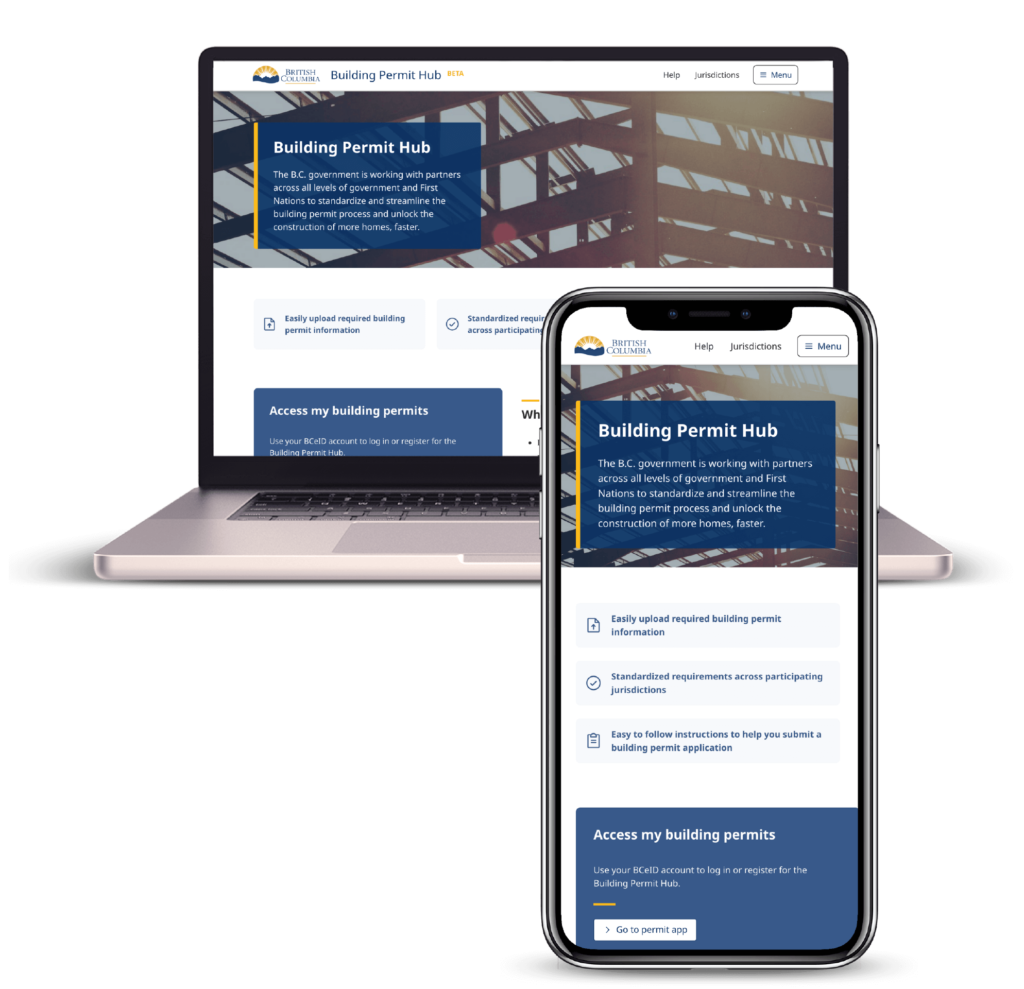


Update key systems that no longer meet business needs
Building a holistic, responsive and sustainable income assistance management system
The BC Employment and Assistance (BCEA) Program supports around 230,000 vulnerable people by providing essential supports for necessities, totalling approximately $214 million each month.
The Ministry of Social Development and Poverty Reduction (SDPR) relies on legacy technology to manage BCEA benefit administration, with most eligibility rules housed on a mainframe system.
Through the Application Modernization Program (AMP), SDPR is working to build a better system to support the BCEA Program and the people who rely on it. While work on AMP will continue for the next few years, significant progress was made in 2023/24 with the establishment of an in-house product team dedicated to building a new cohesive, user-friendly system for managing BCEA Program eligibility rules.
This team, which included service designers, technical staff and BCEA Program subject matter experts, completed initial discovery work for the new system and built a functional proof of concept. The discovery work helped the team secure additional project funding.
With this funding and the first of several cross-functional AMP product teams already in place, SDPR is well-positioned to continue its journey towards building better systems to support the BCEA Program, and ultimately significantly improve experiences for frontline workers and for employment and income assistance recipients.
How the Ministry of Citizens’ Services is supporting reliable and sustainable technology

Work with ministries to update the digital funding model to better support the continuous improvement and upkeep of technology
When funding requests are made for digital projects, CITZ now works with ministries to ensure they have a strategy for product maintenance, future improvements and in-house skill development, ensuring ongoing capacity and sustainability for the ministry.
Progress
Ongoing
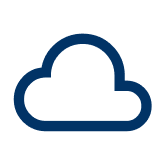
Scale government’s private and public cloud platforms to help ministries develop and host secure, modern and reliable applications
438 active digital products are now hosted on the B.C. government private cloud and public cloud platforms, which help teams deliver new digital services for people in B.C. in a matter of days rather than months or years.
Progress
Ongoing

Expand the tools and guidance available to digital teams from across government to help them build and run modern and reliable digital services
digital.gov.bc.ca’s modernization content and other guidance was visited over 97,000 times, and more than 2,400 developers accessed and used developer.gov.bc.ca to help build and improve digital services more efficiently.
Progress
Ongoing

The Deputy Ministers’ Committee on Digital and Data (DMCDD) prioritizes investments in new and existing common components, to help digital teams deliver reliable services more quickly and cost-effectively
The DMCDD funded $7.846 million in 2023/2024 to further support the development of 8 common components, which will enable ministries to reuse code and develop consistent experiences across government. This builds trust in digital services by ensuring reliability and consistency, while also reducing development time and costs.
Progress
Ongoing

The DMCDD prioritizes funding to update or replace key legacy systems, to ensure services remain reliable and responsive
The DMCDD funded $33.761 million in 2023/2024 for legacy modernization of existing systems to improve performance, enhance security, reduce costs and respond to user experience needs.
Progress
Ongoing
We are equipping teams with the skills, culture, tools and equipment they need to excel in the digital age
Employees across ministries now have access to modern workplace tools that enhance collaboration, productivity and communication, empowering them to work more efficiently. The recruitment process for digital talent is steadily advancing with expanded training opportunities like the Digital Era Leadership Program, which equips senior leaders with essential digital skills for effective leadership in today’s digital age.
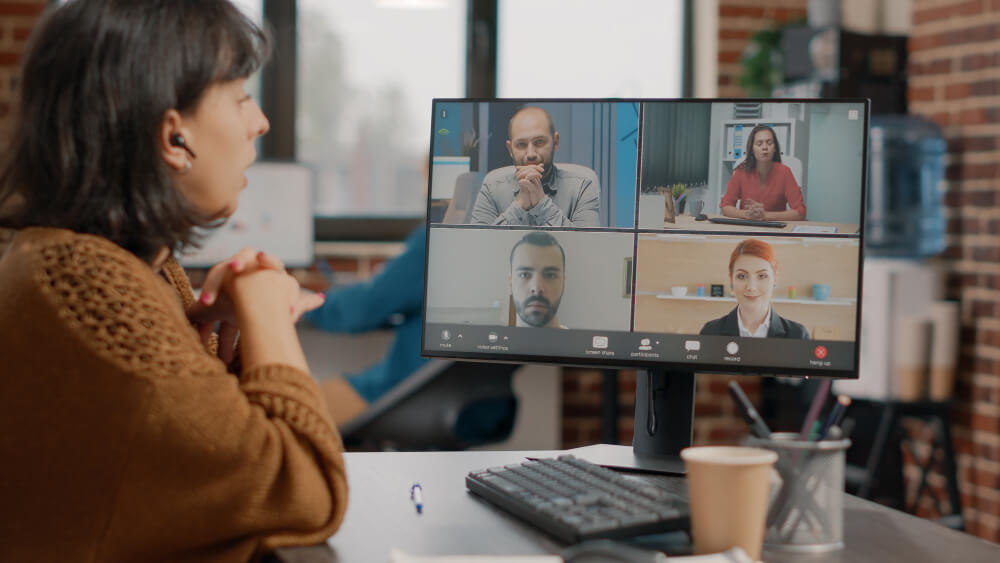

Supporting public service employees in acquiring modern digital skills
Adapting to hybrid work with cloud-based tools
The pandemic accelerated the shift to hybrid work, requiring new strategies for team collaboration, remote worker support and productivity management. In response, the BC Public Service adopted a suite of cloud-based tools. By the end of 2024, all employees will be migrated to an advanced email and productivity platform, providing access to tools like task management and online form building.
This transition goes beyond technology, empowering our workforce to thrive in a hybrid work environment. User research identified training and support as key priorities for staff as they moved their work to the cloud. To address this, comprehensive lessons and resources were developed to improve digital skills for all employees. Since 2023, more than 10,000 BC Public Service employees across all ministries have received customized training through live sessions and recorded webinars.

Helping senior leaders gain the digital literacy and other competencies needed to lead in the digital era
Improving site development processes to boost housing construction
Development on contaminated sites in B.C. requires oversight and remediation to help protect the environment and public health. This can be a complicated process between the landowner and regulator. Yet it’s often a necessary first step when building infrastructure.
To support government’s commitment to increase housing availability, the Ministry of Environment and Climate Change Strategy worked with other ministries to simplify and improve this process. Service improvements were identified by seeking feedback from development professionals and businesses, ensuring that the revisions addressed real-world challenges effectively.
As part of the service design transformation, ministry leaders engaged in the Digital Era Leadership Program, aimed at enhancing their understanding of digital leadership and driving improvements across all service delivery aspects, from policy development to digital implementation. This prompted updates to policies and procedures, facilitating broader changes in team operations, and the design and launch of a new online application process.
Continuous improvements will be integrated into future work, leading to the delivery of an enhanced service journey for people in B.C.
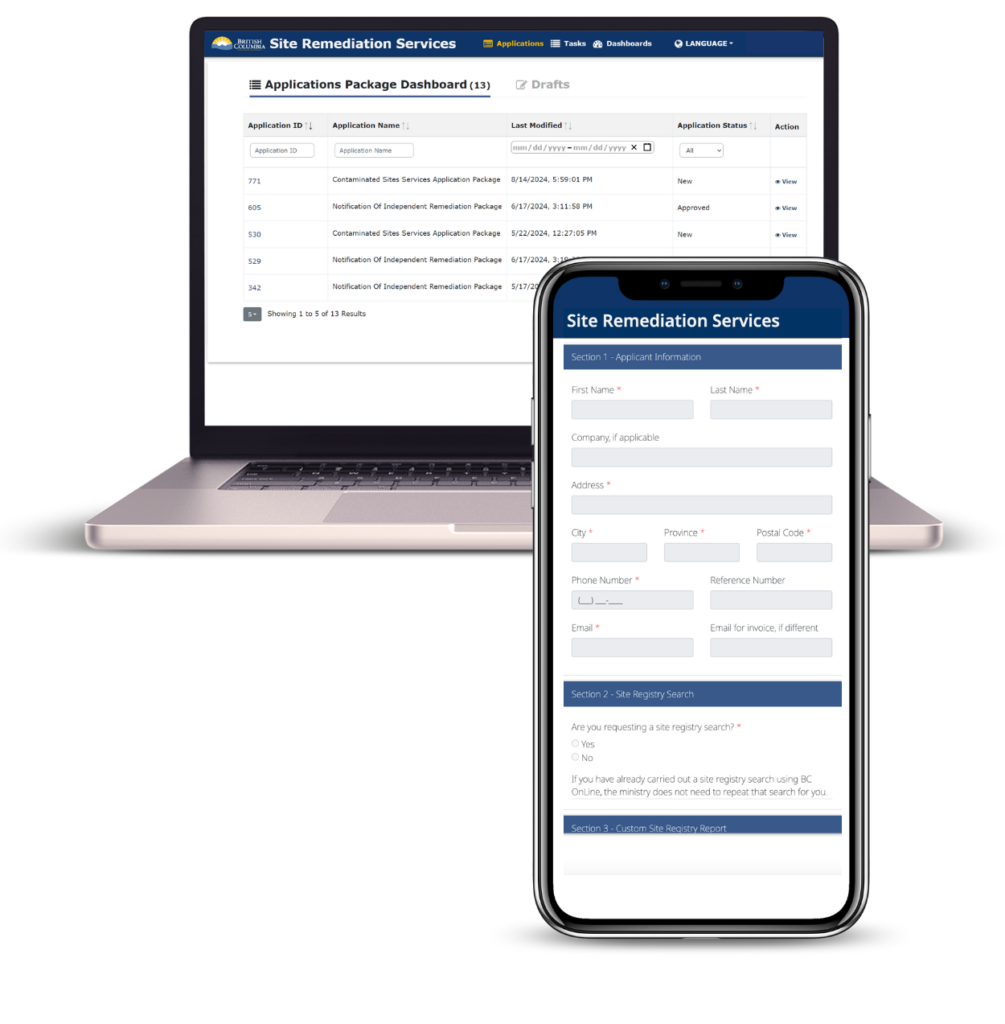


Building internal capacity to support digital service delivery instead of relying solely on partnerships with the private sector
New job profiles increase design talent in BC Public Service
The Public Service Agency partnered with CITZ to develop new job profiles that meet an increasing demand for design roles in government. The addition of IS24 Service Designer and IS27 Senior Service Designer positions to the Job Store helps hiring managers to build this necessary capacity within their teams and fill these positions faster.
Managers, directors and executive directors within the BC Public Service now have the opportunity to integrate human-centred design roles into their teams in alignment with the Digital Plan.
The introduction of these profiles underscores PSA executives’ commitment to digital leadership and innovation, fostering a collaborative culture within the agency and across ministries. It represents a significant step towards creating a more agile and user-centred public service for people in B.C.
How the Ministry of Citizens’ Services is digitally equipping the BC Public Service

Expand course offerings through the Digital Academy so employees at all levels can develop the digital literacy and other skills needed to deliver digital programs and services
CITZ provided 1,183 learning experiences for BC Public Service employees. New self-serve options for topics like Agile fundamentals allow learners to take popular courses independently, freeing up instructor time and eliminating waitlists.
Progress
Ongoing

Work with the Public Service Agency to scale the Digital Talent and Recruitment program, which helps ministries rapidly hire talented technologists
The average number of days from posting a job to sending the offer letter was reduced to 48, and cross-ministry competitions supported hiring digital talent in 8 ministries. 87 digital professionals were made available to teams through digital talent hiring and procurement.
Progress
Complete

Improve access and support for modern cloud-based tools to support performance and productivity in a hybrid environment
Over 4,600 BC Public Service employees gained access to secure cloud-based Agile project management tools when 13 ministries were onboarded to an enterprise agreement.
Progress
Ongoing

Create a seamless and productive environment to attract, retain and engage talented people from across B.C. through a government-wide Digital Workplace Initiative
We have migrated 60% of public service employees to modern collaboration, email, engagement, document sharing and business process automation tools, and delivered training to more than 10,000 BC Public Service employees.
Progress
Ongoing
Continuing our digital journey
Reflecting on the first year since launching the Digital Plan, it’s clear that our efforts are making a real difference to better serve people in B.C. We’re connecting services, building trust in our digital platforms, making technology more reliable and sustainable, and empowering our workforce with training and tools.
In the coming years, central agencies will continue to support ministries as they advance along their digital transformation journey and work to meet the calls to action in the Digital Plan. By leveraging innovative improvements, like automating more processes, we can free people up for more strategic, impactful work. We will continue enhancing our cybersecurity measures, expanding our digital accessibility, and working to foster a culture of constant improvement and collaboration across government.
As we continue to evolve, it’s essential to celebrate and share our successes along the way. By sharing our success stories, we show what’s possible when we work together. Help build our community by sharing this progress report with your networks. Let’s celebrate our collective achievements and inspire each other to innovate further. Together, we can spread the word across government about what’s possible, fueling a culture of continuous improvement and excellence.
